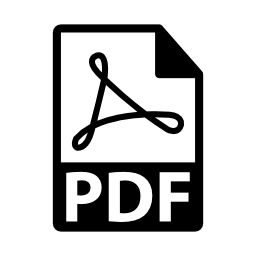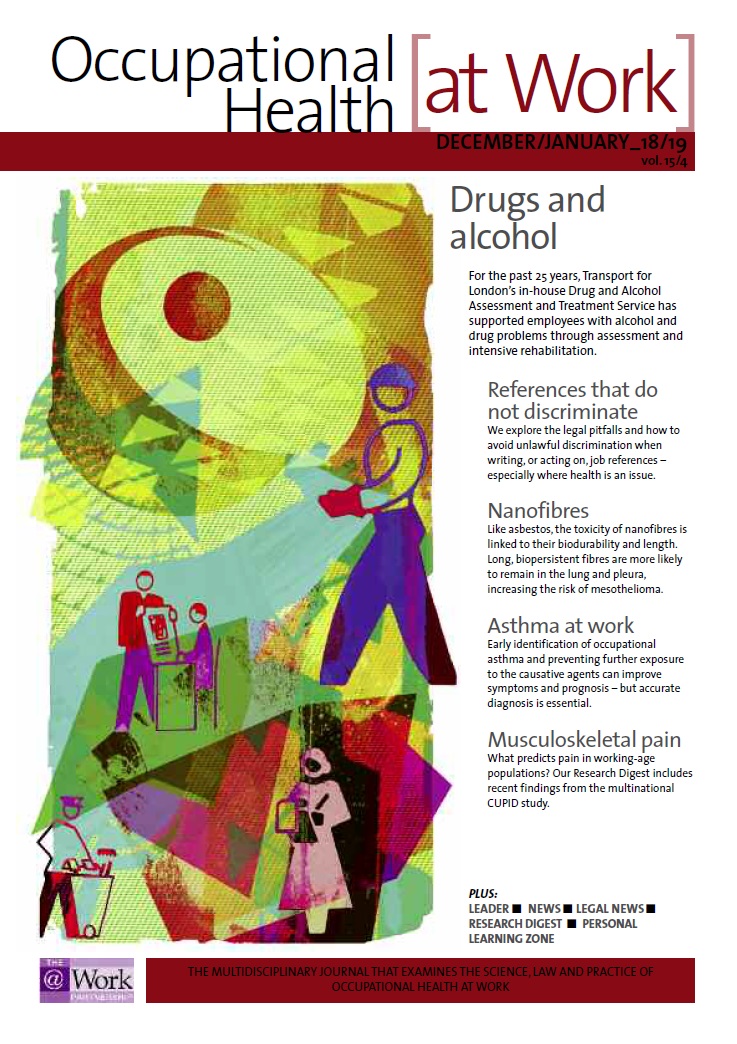December/January 2018/2019 (vol. 15/4)
ContentsFeaturesNewsLegal
NewsResearch DigestResearch PlusCPD
 Personal Learning Zone in this issue
Personal Learning Zone in this issue
Summary:
FEATURED ARTICLES
This issue of Occupational Health [at Work] features a Personal Learning Zone (PLZ) article recommended for continuing professional development (CPD). The assignment questions, ‘Personal learning statement’ and ‘Certificate of engagement’ are available to subscribers here. These will also be stored in your password-protected PLZ. The PLZ will help you document your own CPD. Occupational health physicians and nurses, occupational hygienists and other professionals can use the resource in support of their specialism’s revalidation or CPD requirements.
Pages 27–32. Asthma at work: part 2 – diagnosis of occupational asthma. Occupational health professionals will appreciate that occupational asthma is typically characterised by asthma symptoms that get worse on workdays and/or improve on days away from work. However, while early diagnosis is essential, it should not be based entirely on occupational and medical history. An understanding of the different diagnostic techniques is essential. Most cases of occupational asthma are diagnosed based on history, serial peak flow analysis and specific IgE testing, but other tests are also relevant.
ADDITIONAL CPD
The following articles, news and research items are suggested reading for CPD and professional revalidation. Subscribers can complete their online Personal Learning Zone CPD record here.
Pages 16. Railway employers are required by law to show ‘due diligence’ to prevent safety-critical workers being incapacitated by drugs or alcohol. Transport for London’s Drug and Alcohol Assessment and Treatment Service demonstrates that employers can, in addition, support employees who disclose an alcohol or drugs problem and return them to work safely and productively
Pages 21–26. Occupational exposure to asbestos has been responsible for tens of thousands of work-related mesothelioma deaths in the UK alone. Studies now show that the carcinogenicity of a fibre is a function of its length and biopersistence, which has relevance for the development and use of nanofibres.
Pages 33–35. Job references should be fair and accurate, but they must also be non-discriminatory. This legal article explains the pitfalls when writing job references, or making decisions on them, particularly where health and/or sickness absence are at issue.
Pages 36-41. Our compendium of recent research in occupational health includes an update on the multinational Cultural and Psychosocial Influences on Disability (CUPID) study, which is investigating the physical, psychological and cultural risk factors for the development of low-back and other musculoskeletal pain. Other research confirms the importance of maintaining contact with sick-listed workers, and the lack of evidence underpinning mental health first aid at work.
Author: The At Work Partnership Ltd
Occupational Health at Work December/January 2018/2019 (vol. 15/4) pp43



